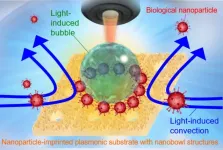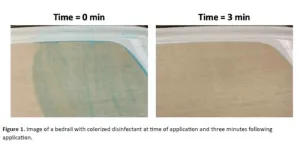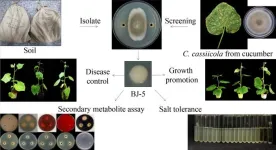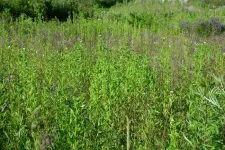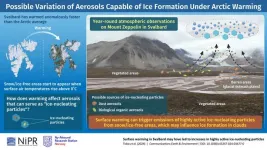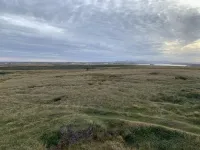(Press-News.org) A new paper in Oxford Open Climate Change, published by Oxford University Press, uncovers evidence suggesting that, contrary to expectations, most U.S. cities are not doing too badly in avoiding development in areas prone to flooding, and those that are effective appear to be applying existing tools and strategies well, rather than doing anything particularly novel.
Despite billions of dollars of investments and widespread mitigation efforts, the costs of disasters in the United States have grown dramatically. Floods are the most prevalent and expensive U.S. disaster, and while climate change plays a role, the primary reason for rising costs is the concentration of people, infrastructure, and economic activities in hazardous areas. A 2018 analysis by Climate Central and Zillow found that eight US coastal states are building faster on flood-prone lands than elsewhere.
One of the most effective ways to limit flood damage is to avoid building new infrastructure and housing in flood-prone areas, yet there is little empirical evidence of how effective local governments are at limiting development there and how such governments might improve their efforts. Numerous studies have researched the contextual factors that lead local jurisdictions to adopt more numerous, advanced, or better-quality floodplain management actions. However, whether more numerous, advanced, and higher-quality actions lead to less floodplain development is less established because few studies have assessed floodplain development outcomes directly.
In this study, researchers reviewed patterns of municipal floodplain development and management in New Jersey from 2001 to 2019. The investigators picked New Jersey because it represents an extreme case. Climate Central and Zillow found that housing growth in the New Jersey coastal risk zone was 3.4 times higher than in surrounding areas. Five New Jersey cities made the top ten list for zone risk development, and Ocean City, NJ, built more flood-exposed houses than any other city in the country.
First, the study examined the relationship between wealth and proximity to the coast in development projects. Second, the researchers analyzed how floodplain development relates to municipal capacity and management actions in 128 municipalities across four counties. Finally, they conducted in-depth case studies in four New Jersey towns: Lumberton, Aberdeen, Weehawken, and Woodbridge.
The investigation indicates that most New Jersey cities limit floodplain development more than prior research would suggest given their geographic and socioeconomic context. Between 2001 and 2019, 422 New Jersey municipalities (85% of them) limited the development of new housing in floodplains more than would be expected based on the extent of the floodplain within the municipality and rates of new housing construction. Some 335 municipalities (68%) limited increases in impervious surface (such as pavement and concrete) in the floodplain. A full 126 New Jersey towns (25% of them) put none of their new housing in the floodplain between 2001 and 2019. Just 14% of New Jersey towns are building in their floodplains more than would be expected based on the size of their floodplains and rate of development.
In interviews with people from the New Jersey towns, practitioners repeatedly stressed practical, common sense behavior, rather than complicated new plans. “They’re not doing anything special,” one person interviewed during this research explained. It appears most towns can limit floodplain development with a few conventional local ordinances and typical levels of government capacity - not radical innovations or Herculean efforts. The keys seem to be having a few high-quality land use tools and consistently implementing them, which requires coordination and commitment by local officials.
The paper shows that limited floodplain development is the norm, not the exception, in New Jersey. Municipalities routinely limit floodplain development using land use management and hazard mitigation tools that have been in use for decades and do so with modest and existing levels of local government capacity. There are multiple paths to limit floodplain development, rather than one best practice, and having a few strong floodplain management tools and focusing on the quality of the social infrastructure (collaboration, commitment, consistency) may be more important than having many tools and trying to implement complicated new plans.
“It’s surprisingly good news,” said A.R. Siders, the study’s lead author. “There’s room for improvement. But most towns are already taking action The challenge is how to help them do even more and how to motivate and support the small minority of towns that are still concentrating new buildings in their floodplains. That’s a very different challenge.”
The paper, “How local governments avoid floodplain development through consistent implementation of routine municipal ordinances, plans, and programs,” is available (on September 19th) at https://academic.oup.com/oocc/article-lookup/doi/10.1093/oxfclm/kgae017.
Direct correspondence to:
A.R. Siders
Director of the Gerard J. Mangone Climate Change Science and Policy Hub
University of Delaware
111 Academy Street, Newark, DE, 19716
siders@udel.edu
To request a copy of the study, please contact:
Daniel Luzer
daniel.luzer@oup.com
END
Reducing floodplain development doesn’t need to be complex
2024-09-19
ELSE PRESS RELEASES FROM THIS DATE:
Lights, camera, action! Coronavirus spike proteins can be selectively detected in 5 minutes
2024-09-19
Like moths to a flame, microbes can also be moved by light. Using this knowledge, researchers from Osaka Metropolitan University’s Research Institute for Light-induced Acceleration System (RILACS) have demonstrated a method to detect the presence of viruses quickly and using only a small sample.
The research team led by OMU Professor Takuya Iida, the director of RILACS, and Associate Professor Shiho Tokonami, the deputy director, report in npj Biosensing on a light-induced immunoassay. Using ...
Your Zoom background could influence how tired you feel after a video call
2024-09-19
Part of many people’s pandemic experience included working from home. Even after lockdowns, videoconferencing remains a big part of life as people continue to work remotely, connect with families and friends online, and attend virtual events hosted on videoconferencing platforms.
Spending hours on video calls, however, can be exhausting and manifest as physical, emotional, or cognitive tiredness – a phenomenon known as videoconferencing fatigue (VF). Now, researchers in Singapore have asked if a relationship between virtual backgrounds and VF exists and ...
With the use of visual cues, hospital rooms get nearly 70% cleaner
2024-09-19
With the Use of Visual Cues, Hospital Rooms Get Nearly 70% Cleaner
New study shows that a simple color additive in disinfectant wipes dramatically improved room cleanliness and even reduced time needed for cleaning
Arlington, Va. — September 19, 2024 — A new study published today in the American Journal of Infection Control (AJIC) reports a comparison of hospital room cleanliness using standard disinfectant wipes versus wipes with a color additive that allows users to see which surfaces have been sanitized. With the color additive, rooms ...
Serial-autoencoder for personalized recommendation
2024-09-19
In the last decade, auxiliary information has been widely used to address data sparsity. Due to the advantages of feature extraction and the no-label requirement, autoencoder-based methods addressing auxiliary information have become quite popular. However, most existing autoencoder-based methods discard the reconstruction of auxiliary information, which poses a huge challenge for better representation learning and model scalability.
To solve the problems, a research team led by Zhu YI published their new research on 15 August 2024 in Frontiers of Computer Science co-published by Higher Education Press and Springer Nature.
The team proposed a novel representation ...
How do look for microbes in nature that are beneficial to plant?
2024-09-19
Cucumber is a common vegetable on people’s table because of its crisp and refreshing characteristics. In order to meet the market demand throughout the year, cucumber is now mainly planted in facility greenhouses. However, the loss of soil nutrients and the accumulation of pathogenic microorganisms are inevitable in successive years of cultivation. Cucumber corynespora leaf spot, also known as cucumber target spot disease, is a major foliar disease that causes cucumber yield reduction, and its pathogen is the Corynespora cassiicola. The pathogen harms cucumber leaves, causing irregular spots and affecting the photosynthesis ...
Exotic species invasions enhance biodiversity response to climate change
2024-09-19
Globally, more than 13,000 plant species, equivalent to the entire native flora of Europe, have been naturalized outside their native ranges. A recent study, jointly conducted by scientists from China and the USA, has provided new insights about biodiversity, exotic invasion, and their relationship to climate change.
Published in Nature Plants, the research uncovers the climatic niche mechanisms that shape both the vulnerability of native ecosystems and the invasiveness of exotic species in a warming world.
A long-standing debate exists over the impact of exotic species on native ecosystems and ...
Arctic warming may fuel ice formation in clouds
2024-09-19
The Arctic frequently experiences temperatures that support the formation of mixed-phase clouds that contain supercooled liquid droplets and ice crystals. The composition of such clouds plays a crucial role in the region's energy balance and climate system. Clouds with more liquid last longer and reflect more sunlight than those with more ice crystals.
With Arctic warming, meteorologists have been interested in determining the effect of rising temperatures on cloud composition and its broader effect on the region. Climate models generally predict that as the Arctic warms, clouds in the region will ...
Rugged Falklands landscape was once a lush rainforest
2024-09-19
A researcher from the University of Southampton (UK) has found evidence that the treeless, rugged, grassland landscape of the Falkland Islands was home to a lush, diverse rainforest up to 30 million years ago.
A study by Dr Zoë Thomas, leading an international team of scientists, reveals that the South Atlantic archipelago was once covered in cool, wet woodland – similar to the present day rainforests found in Tierra del Fuego, off the tip of South America.
The scientists conducted the research after clues to the whereabouts of buried remains of the ancient forest reached them via word-of-mouth in the tight knit community of Port Stanley, the Falklands’ ...
Dizziness in older adults is linked to higher risk of future falls
2024-09-19
IMPERIAL COLLEGE LONDON PRESS RELEASE
Peer reviewed/Systematic review and meta-analysis/People
UNDER EMBARGO UNTIL Thursday 19th September at 00:01 UTC (01:01 BST)
Dizziness in older adults is linked to higher risk of future falls
Researchers say it’s not just a normal part of ageing
The first meta-analysis of its kind has shown a conclusive link between older adults experiencing spells of dizziness and a dramatically elevated risk of falling.
Dizziness is a term used to describe sensations such as vertigo, imbalance, light-headedness, and disorientation. It is common in older adults, affecting one in three of those aged 65 years and older. For the first time, dizziness ...
Triptans more effective than newer, more expensive migraine drugs
2024-09-18
Some triptans are a more effective treatment for acute migraines than newer, more expensive drugs, finds an analysis of the latest evidence published by The BMJ today.
Triptans work by narrowing blood vessels in the brain and preventing the release of chemicals that cause pain and inflammation.
The findings show that four triptans - eletriptan, rizatriptan, sumatriptan, and zolmitriptan - were better at relieving migraine pain than the recently marketed and more expensive drugs lasmiditan, rimegepant, and ubrogepant, which were comparable to paracetamol ...
